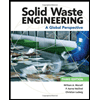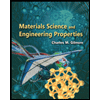Families in a community in a developing country use large, 200.0 L drums to un-treated surface water. You are designing a device that is designed to dose the volume with a coagulant, stir to allow flocculation, then add chlorine tablets to disinfect the water. The water is 25 °C and initially contains 1.0E+09 particles per L. The initial particles can be assumed to be spherical, 15.0 micrometers in diameter, and with a density of 1.675 g/mL. a. If the drums have a diameter of 572 mm, how long will it take for the particles to completely settle without any coagulation or flocculation? (answer in seconds) You have determined that you can achieve complete destabilization of particles by achieving an ionic strength of 0.01 M or higher. If you use alum (Al2(SO4)3) as a coagulating agent, what mass of alum must be added per batch of 200 L? (answer in grams) How many joules of energy would be required to stir the drum at a mixing intensity of 150 s-l for 20 minutes? If the drum is stirred and flocculation occurs according to the values provided in part (c), how many initial particles will be in each newly formed aggregate?
Families in a community in a developing country use large, 200.0 L drums to un-treated surface water. You are designing a device that is designed to dose the volume with a coagulant, stir to allow flocculation, then add chlorine tablets to disinfect the water. The water is 25 °C and initially contains 1.0E+09 particles per L. The initial particles can be assumed to be spherical, 15.0 micrometers in diameter, and with a density of 1.675 g/mL. a. If the drums have a diameter of 572 mm, how long will it take for the particles to completely settle without any coagulation or flocculation? (answer in seconds) You have determined that you can achieve complete destabilization of particles by achieving an ionic strength of 0.01 M or higher. If you use alum (Al2(SO4)3) as a coagulating agent, what mass of alum must be added per batch of 200 L? (answer in grams) How many joules of energy would be required to stir the drum at a mixing intensity of 150 s-l for 20 minutes? If the drum is stirred and flocculation occurs according to the values provided in part (c), how many initial particles will be in each newly formed aggregate?
Solid Waste Engineering
3rd Edition
ISBN:9781305635203
Author:Worrell, William A.
Publisher:Worrell, William A.
Chapter5: Separation Processes
Section: Chapter Questions
Problem 5.18P
Related questions
Question

Transcribed Image Text:2. Families in a community in a developing country use large, 200.0 L drums to un-treated
surface water. You are designing a device that is designed to dose the volume with a
coagulant, stir to allow flocculation, then add chlorine tablets to disinfect the water. The
water is 25 °C and initially contains 1.0E+09 particles per L. The initial particles can be
assumed to be spherical, 15.0 micrometers in diameter, and with a density of 1.675 g/mL.
a. If the drums have a diameter of 572 mm, how long will it take for the particles to
completely settle without any coagulation or flocculation? (answer in seconds)
You have determined that you can achieve complete destabilization of particles
by achieving an ionic strength of 0.01 M or higher. If you use alum (Al2(SO4)3) as a
coagulating agent, what mass of alum must be added per batch of 200 L? (answer in
grams)
How many joules of energy would be required to stir the drum at a mixing
intensity of 150 s-' for 20 minutes?
If the drum is stirred and flocculation occurs according to the values provided in
part (c), how many initial particles will be in each newly formed aggregate?
Expert Solution
Step 1
Since we only answer up to 3 sub-parts, we’ll answer the first 3. Please resubmit the question and specify the other subparts (up to 3) you’d like answered
Trending now
This is a popular solution!
Step by step
Solved in 5 steps

Knowledge Booster
Learn more about
Need a deep-dive on the concept behind this application? Look no further. Learn more about this topic, civil-engineering and related others by exploring similar questions and additional content below.Recommended textbooks for you

Solid Waste Engineering
Civil Engineering
ISBN:
9781305635203
Author:
Worrell, William A.
Publisher:
Cengage Learning,

Materials Science And Engineering Properties
Civil Engineering
ISBN:
9781111988609
Author:
Charles Gilmore
Publisher:
Cengage Learning


Solid Waste Engineering
Civil Engineering
ISBN:
9781305635203
Author:
Worrell, William A.
Publisher:
Cengage Learning,

Materials Science And Engineering Properties
Civil Engineering
ISBN:
9781111988609
Author:
Charles Gilmore
Publisher:
Cengage Learning


Engineering Fundamentals: An Introduction to Engi…
Civil Engineering
ISBN:
9781305084766
Author:
Saeed Moaveni
Publisher:
Cengage Learning

Traffic and Highway Engineering
Civil Engineering
ISBN:
9781305156241
Author:
Garber, Nicholas J.
Publisher:
Cengage Learning

Principles of Geotechnical Engineering (MindTap C…
Civil Engineering
ISBN:
9781305970939
Author:
Braja M. Das, Khaled Sobhan
Publisher:
Cengage Learning